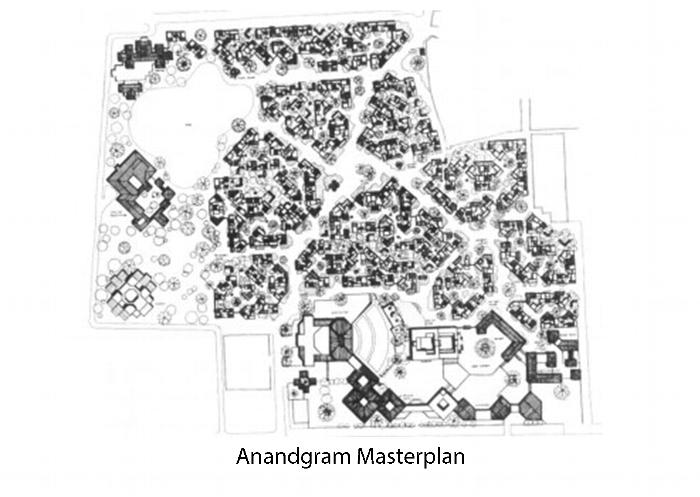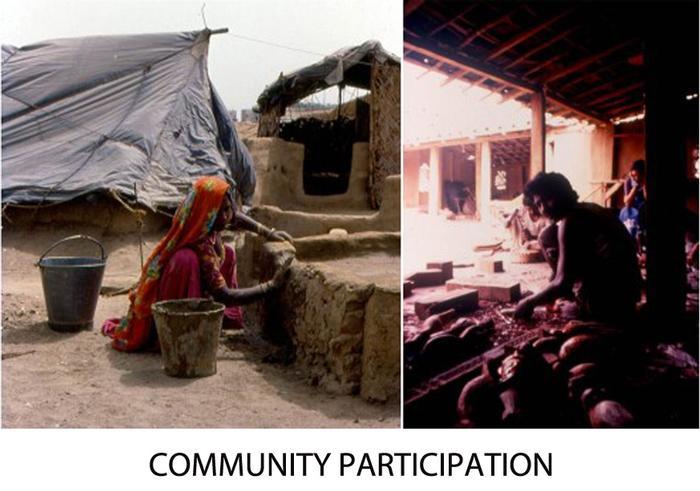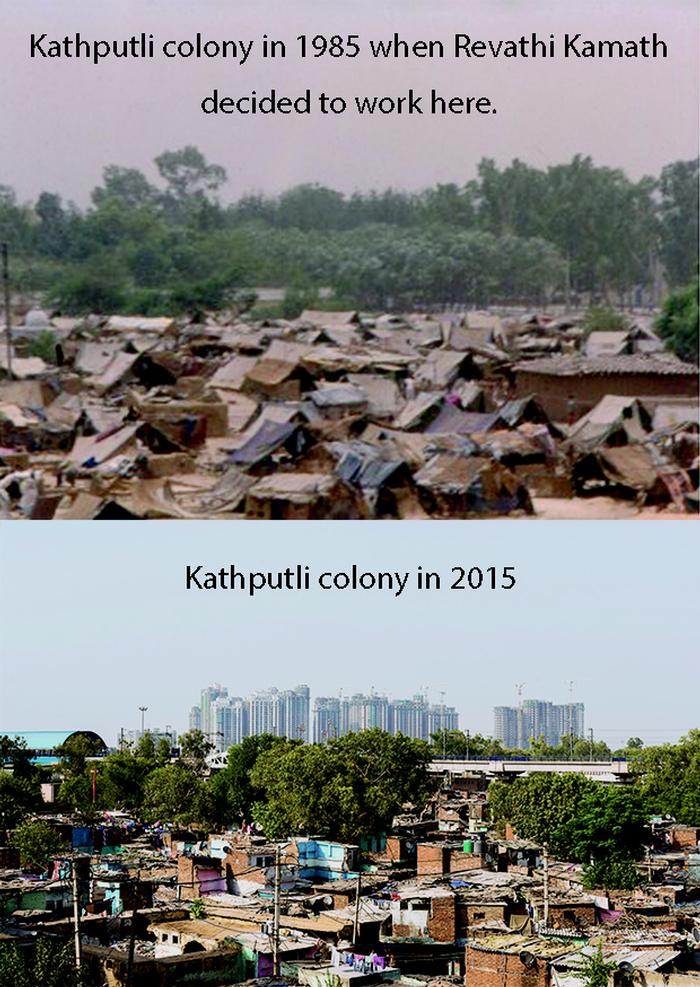Ayushman Kedia EssayFrom Squatters of Threat to Homes of Hope"They are able to listen if both— building and thinking—belong to dwelling, if they remain within their limits and realize that the one as much as the other comes from the workshop of long experience and incessant practice."-Martin Heidegger. In a quest for opportunities, every year over a hundred thousand people migrate to Delhi, the National capital of India. Some are warmly received by the city and succeed here, whereas others who fail to do so, are forced to its severity . The people of Kathputli colony, in Shadipur suburb in west- Delhi faced the latter fate. Under the Shadipur metro line , around the Karampura flyover and enclosed by high walls along the periphery , lies Kathputli colony; Where, artists, painters, sculptors, puppeteers and musicians have formed a neighborhood of around a thousand dwellers in loose groups over the last fifty years. Spread over an expanse of about 30 acres, it is one of Delhi's major squatter settlements. A narrow street just beside the flyover led me into the site, surrounded by few shops and scantily built shelters. Further into the street, a curious sight greeted me. A gang of men were hedging the corner shop and were most certainly having a heated argument. A brawl was imminent. Children loitered around the edges of houses to see what the commotion was while the dogs barked at the disturbance. The street itself was damp where the discharge from the overflowing drains collected in filthy puddles on the street and the air was rife with the stench of garbage emanating from the heaps that could be seen at the far end of the street. It was a hellish sight, almost nauseating. A sight that on ordinary days would have made me take one look, turn around and never come back. But the man who I had to interview lived in one of the houses along this very street. Choosing to ignore the chaos, I walked ahead. On reaching there, I greeted Ghanshyamji Bhopa, the son of late Harji Bhopa. My mind was still preoccupied with the turmoil, as I unthinkingly asked him “How does one even manage to live here?"; "We have been living here long enough to get used to it", he replied, sarcastically. He lived in a cold house which smelled of dampness, I could sense moisture seeping into the walls, as we sat in a corner on the floor. Talking about his arrival in Delhi three decades ago, He said, "It was a harsh winter night when Babuji (Father), had brought us, me and mother here, to Delhi from Pabusar, Rajasthan. Babuji was a master painter, in our family painting is a tradition. He had come to Delhi to gain exposure and earn enough to sustain his family and possibly plan a prosperous future in Delhi. Life here initially was tough as we were looked upon as intruders, often neglected and ignored. To avoid people we would wander in search of empty spaces in places that are unlikely to be noticed usually around railway tracks, below flyovers, in parks; to sleep and settle there. Ever since learning the skill to create makeshift tents, we had a drill as we came across a suitable space to pitch our tent. We would first spread out our bags which almost literally contained everything we own, inside the tent. We’d then make a perimeter with mud or stone. Inside we would dig a hole to make a fire place, and would often use it for cooking. While wandering, we came across the Kathputli colony, which then comprised of around 400 dwellers. After conversing with the people and on learning that a majority of them shared similar occupations and similar cultures to us, we decided to live there". He collected his paintings lying in a corner, spread them on the floor, and said, " We came here with hope, not knowing we would continue to live like this. This wasn't the life that we had chosen, it became inevitable and now over these years it has become our reality ". He adds, “There are many sleepless nights, when I wake up, horrified at the thought of my little home, being bulldozed and annihilated to ground. We are living here illegally since decades, under constant threat of demolition”. As he finished speaking I could sense the dampness of grief in his voice. Homelessness turns people into "rough sleepers", “shelter sleepers" and forces them to squat illegally in vacant areas. Lacking, secure and permanent accommodation, they lose the 'sense of belonging' to a place and wander searching for isolated areas to dwell. To prolong their survival in harsh environments, they create makeshift arrangements. Essentially, they do not choose homelessness; it occurs from a system, which due to social barriers fails to support those at the risk of turning homeless. A society ought to nurture people and foster trust. Instead our society is based on economic discrimination and fails to sympathize with the homeless and their need for social support. People who sleep on streets are seen as criminals. Some face social abuse through physical violence and are often shamed verbally. Due to their unsanitary living conditions, their problems of literacy, acts of criminality, and their inability to interact with other people, they are often overlooked and not accepted by society. This often leads to harboring low self-esteem and self-worth in them. Forced partly by circumstances and partly by ignorance, they become susceptible to poverty. On questioning him, if any efforts had been made to help their cause, he replied," Circa 1985, Revathi Kamath, a young architect, worked alongside us to help us build our houses and enhance our settlement to make us worthy of the government's recognition" In this settlement, she envisioned to create affordable architecture through community participation aiming for the community's recognition. Her attempts to transform the existing settlement, and enrich it through the artisanal skills and methods of the people, formed the backdrop of Anandgram. While documenting the Kathputli colony, she observed the people, their lifestyles, their behaviors, their clusters and meanwhile developed her understanding of them. She sympathized their cause and interacted with the residents individually, she discussed with them about their history, origins, and their cultures, acknowledged their skills and the reasons for their present state. Together, she and the people developed a bond and soon she became a part of their community. Next, she examined each unit and documented it. By identifying the areas within a house, the materials used, the spaces to conduct activities like praying, cooking, eating, storing, sleeping and the importance of each space for the people, she had managed to create drawings of each dwelling to understand the hierarchy and inter-relation of spaces in them. Some houses had courtyards with water-tanks and shrines. The residents had planted a tree in these courtyards since it depicts their desire to settle over time. Public spaces like temples and hand-pumps in the clusters, their importance and their frequency of use were recognized. She also noticed the positioning of individual units within the clusters and that of the clusters within the settlement. Based on her documentation, she managed to map the users on socio-cultural grounds. The clusters were classified on the basis of traditions, cultures, the public spaces and the private spaces. The next and the most crucial step was involving the residents and designing 'with them' to propose a master-plan for Anandgram. Further discussions, enabled her to figure out the required spaces, their respective areas, and the manner to depict them in built environments. Through her endeavors to understand their needs, the community collectively made efforts to redesign their own spaces. They prepared models of their homes and assembled them uniformly to form the clusters. Through her experiences of the community, she reorganized them in the larger community clusters (80-100 houses), where people sharing similar cultures were placed together and then further fragmented them into the neighborhood clusters( 3-4 houses) on grounds of similar occupations, on being associated to similar villages, or same families . This would allow them to develop a 'sense of belonging' to not just their houses, but towards the clusters and the community as well. In her blueprint, Revathi developed an integrated network of streets and services in the clusters. In the smaller clusters, the public areas like shrines and courtyards formed the core, the dwellings shaped the crust, and essentials like community toilets were placed outside, providing separate units for women. Services passed through an alley behind the houses, to collect and channel the waste to the nearby biogas plant. The recycled waste and the energy produced could be harnessed by the people for their further use. Existing lowland in the site was proposed to be transformed into a pond and to use its mud for construction. In a community driven by confusion and chaos, she attempted to bring in organization and stability. “We must respect the people and the community, understand their value in the design of form , however small or innate it may be. It becomes easier while designing, when we understand the people, their spatial patterns and work alongside them"- Revathi Kamath. The idea was not just to create shelters, but create holistic communities where people could engage with each other, across caste boundaries and develop collectively. The sizes of dwellings for nuclear families and joint families in the masterplan were 32 square meters and 46sq meters respectively. A proposal for community centre, exhibition centre, school, tourist and medical facilities was also put forth. To some artists, sculptors and painters, she offered employment in her upcoming projects and they now aspired to live a better life. Harji, the father of Ghanshyamji, was employed and involved in her projects until senescence. Anandgram , despite all the hard work could never be built on site due to the government's reluctance. They had different plans for this settlement and with the upcoming flyovers and metro stations in the precinct, a rehabilitation program wouldn't be possible alongside. In the span of 30 years , between 1985 and 2015 , the population of the settlement has increased, their sufferings have prolonged, the city has grown and the land prices have risen. The pressures on urban land for development have led to presumptions of higher F.A.R ( floor area ratio) which during this period has drastically inreased from 1.5 to 9.0 in Shadipur. Hence the government has brought in developers to build multistoried structures 'for them'. Their proposals show no understanding of the life in the community unlike Anandgram. Anandgram is a noteworthy effort on Revathi Kamath's behalf to create a village amidst the city. The design serves an excellent model on how to tackle social issues through architecture. The government has assigned a building house the task to develop a housing scheme for the community .Revathi is more than willing to work alongside them if her services are needed, As she says, "Having worked with them previously, I have developed a social attachment with them. I know their needs, their aspirations, their hierarchy of spaces, and how to infuse these features in a multi-storied building". Over years we have seen how typical housing projects have been looked upon as a solution for the homeless, and have failed terribly. According to me, the response to homelessness is 'community'. Hence as an architect, the most viable solution to this would be community participation. In this process each user is different, and so needs to be our approach towards them. The Idea is inspired from how villages work, interact and grow together. It is about being a part of the community, by living and working in it and engaging the community as partners in the process not mere recipients in it. The squatters are not a example of the despondency of the people, they are a demonstration on how people have the power to build. Hence, through community participation, we architects need to perceive their power of building and channel it in the built environment. Architects need to, observe the users ,their behaviors and interact with them to understand their problems and the reasons for their present state. It is essential to identify the condition of their shelters, the spaces and their importance to the user. Architects must involve the users in order to perceive their architectural desires, to grasp and value their concepts of spaces and their ideas of a dwelling. Create with the people to provide an essential framework of their shelters based on the inferences obtained above, and then allow them to take over and express themselves in these structures, which will then be a symbol of their self expression and evolve into 'Their Homes'. We need to change the negative stereotype against the homeless in our society. It's easier to criticize or disparage them, if we are to bring a change we need to see and appreciate the beauty of each person. No one chooses to be homeless; every single person has a reason to be there. In our busy lives, by ignoring these profound reasons for homelessness, we have left the task to counter this social issue, to the government and organizations and the results have been far from convincing. In order to end their suffering, we need to take our time and get involved. They want a sense of belonging, connectivity and to become a part of the society like us. They want dignity, hope and the opportunity to share their talents and their skills. I believe, through kindness, we can overcome the social barrier which divides the homeless and the people around them from the rest of the world. We can change the direction of people's lives by changing the way they see themselves. It is in these moments of social relationships and adjustments that hope is created, and hope is everything for those who have nothing. Globally, through participating with the people and working alongside them, we, both as architects and as individuals can and certainly will be able to solve the issue of homelessness. Each of us have the ability to make a difference in the lives of the homeless, and when we do so, we certainly will make a difference to ourselves. I would like to conclude by saying, " There is enough sadness in the world to talk about sorrow and despair, in order get inspired and motivated, we need stories of joy and hope". Additional Help and InformationAre you in need of assistance? Please email info@berkeleyprize.org. |
|




